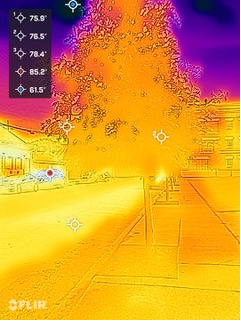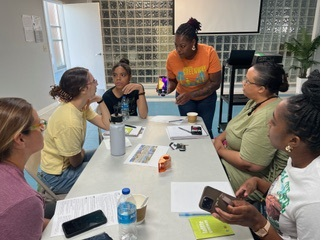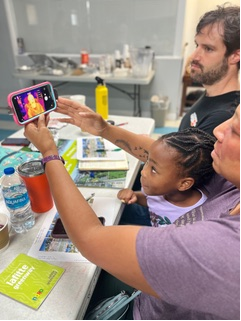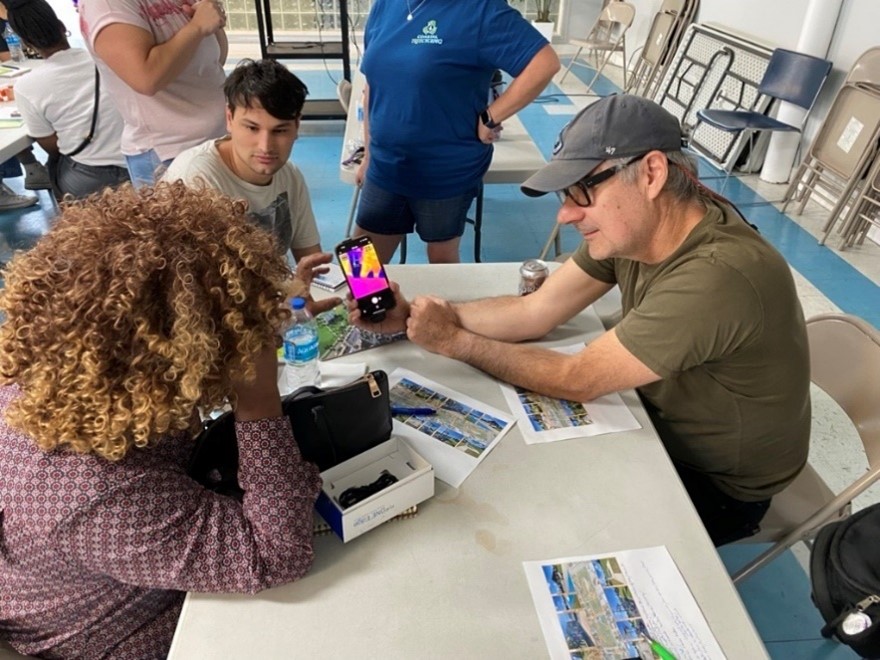By Isabel Barrios, Senior Program Officer, Greater New Orleans Foundation
When was the last time you were at a playground or a bus stop on a hot day? As it turns out, depending on the materials used and availability of shade nearby, these places can be dangerously hot and unsafe on hot days. Jason Neville, Executive Director of the Lafitte Greenway Partnership (formerly Friends of Lafitte Greenway,) recently discovered a nearly 50̊ temperature difference between a sun-exposed playground surface (127̊ ) and a nearby shaded grassy spot (80̊ ) with a user-friendly Forward Looking Infrared (FLIR) camera.

Courtesy of Lafitte Greenway Partnership
On Saturday, September 28, the Greater New Orleans Foundation’s Next 100 Years Challenge participants were hosted by the Lafitte Greenway Partnership for a heat data collection training at the Sojourner Truth Center in Mid-City. Trainers, Janice Barnes and Leo Temko of Climate Adaptation Partners, focused on the hazard that heat presents for communities and how to use heat data to make outdoor spaces safer. Participants learned about why it is important to address heat, how to collect heat data using FLIR cameras, and how to use the data collected to create cooler spaces. After some practice, participants teamed up and took the FLIR cameras outside for a test run.
The Foundation launched the Next 100 Years Challenge in celebration of our centennial year to inspire great ideas for resilient infrastructure projects, including nature-based solutions, that will reduce the threat from storms and other disasters and which can attract federal and state funds for their construction. We awarded $100,000 each to ten collaborative teams from across our region that demonstrate strong potential to secure additional infrastructure dollars. Recognizing great potential in an additional five projects, the Foundation awarded them $40,000 each to further develop their promising project concepts, a total $1.2 million investment in our region.


There were immediate “lightbulb” moments and great insights on how heat data can inform material selection, program scheduling, placement of structures, and so much more. Jason Neville remarked, “This community-based data gathering will be used to tell the story of the heat impacts of climate change and to inform the design of resilience projects on the Greenway and in adjacent communities like Treme, Broad Street, and Claiborne Avenue. It will also serve as important data to be used in submission of state/federal grants to secure much needed resilience funding for New Orleans. We’re grateful for the technical and financial support from the Greater New Orleans Foundation that made this great project happen.”
The Foundation is eager to continue adding to our resilience toolbox with additional learning opportunities about heat.
Recommended read for context: https://yaleclimateconnections.org/2024/10/warming-world-deadly-problem-heat-related-deaths-are-surging/
